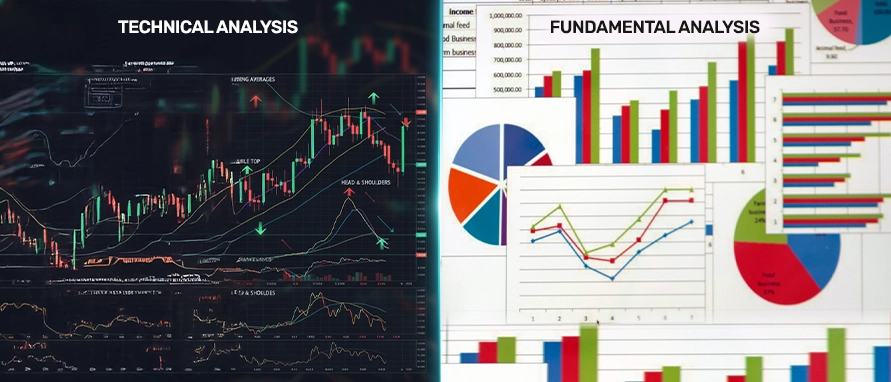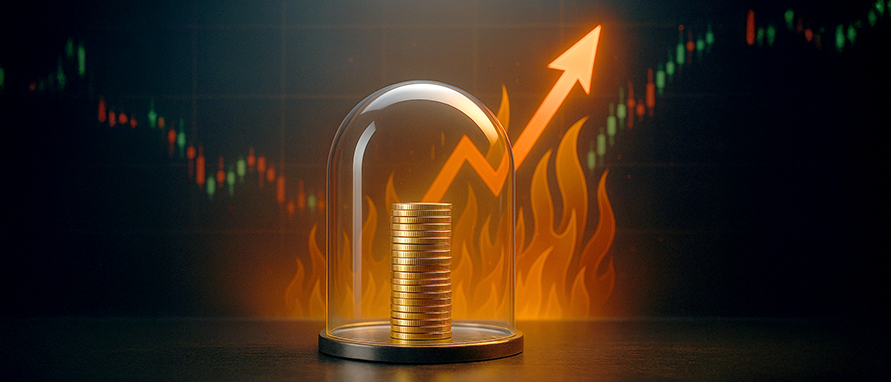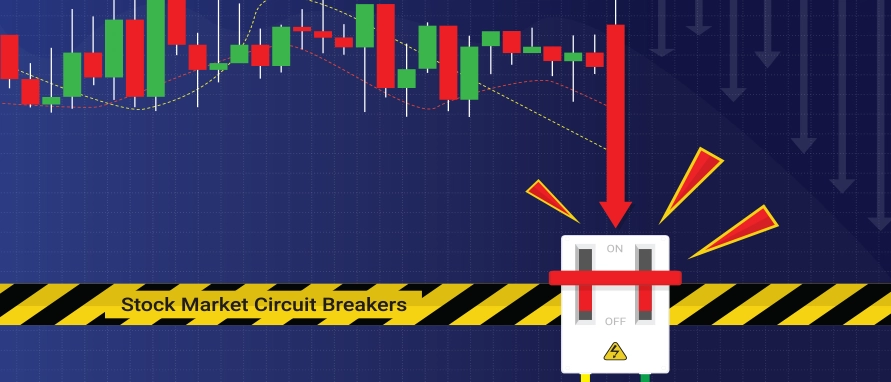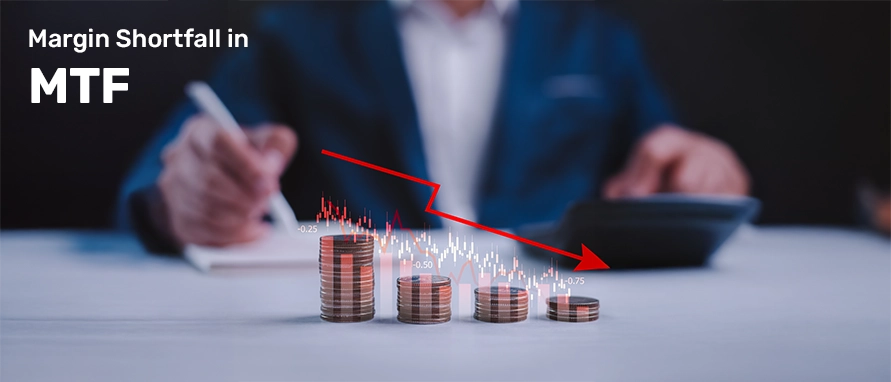-
Our ProductsLoansCardsInsuranceInvestmentsStock MarketElectronics MallCIBIL ScoreKnowledge CentreAcademyCalculators
- Our Services
- My Account
- Discover
Breakout Trading Strategy
Breakout trading is a popular strategy among traders looking to profit from significant price movements once a stock or asset breaches a defined support or resistance level. These breakouts often signal the start of a new trend or momentum phase, making it a key entry point for active traders. Understanding how breakouts work, how to identify them, and which indicators to track can help traders make more informed and timely decisions.
What Is a Breakout in Trading
A breakout occurs when the price of a stock or financial instrument moves beyond a well-defined support or resistance level with increased volume. It indicates a potential shift in market sentiment, often leading to sharp price movements in the direction of the breakout.
Breakouts can be:
Bullish: Price breaks above resistance
Bearish: Price falls below support
These movements often mark the beginning of new trends and can offer opportunities for quick returns if identified early.
How Breakout Trading Works
Breakout trading involves entering a position when the price breaks through a key level and placing trades in anticipation of continued movement in the breakout direction.
The basic steps:
Step 1: Identify key support and resistance levels.
Step 2: Monitor price action as it approaches these levels.
Step 3: Confirm the breakout with increased trading volume.
Step 4: Enter the trade in the direction of the breakout.
Step 5: Use stop-loss orders below support or above resistance to manage risk.
The key to this strategy lies in timing and confirmation — not every price move is a true breakout. False breakouts can lead to losses if trades are placed prematurely.
Why Traders Use Breakout Strategies
Breakout strategies are favoured for their potential to capture strong price moves early. They are especially useful in:
Trend initiation trades
High momentum markets
Volatile sessions or during news-driven movements
By trading the breakout, investors attempt to ride the beginning of a trend rather than jumping in mid-way, which can be more risky.
Key Indicators for Breakout Trading
Breakout traders often rely on a combination of price action and technical indicators to confirm breakout signals. Here are some of the most commonly used indicators:
1. Volume
Volume is a crucial confirmation tool. A breakout with high volume is more likely to be genuine and sustainable. Low volume breakouts often result in reversals or false signals.
2. Moving Averages
Moving averages help smoothen price data and identify trend direction. Breakouts above the 50-day or 200-day moving average can signal strong bullish momentum.
3. Bollinger Bands
These bands expand and contract with volatility. A breakout above the upper band or below the lower band may suggest a strong directional move is underway.
4. Relative Strength Index (RSI)
RSI indicates overbought or oversold conditions. Breakouts with RSI moving above 70 or below 30 can indicate potential trend strength but also caution for reversals.
5. Chart Patterns
Breakouts often occur from technical patterns like triangles, flags, or rectangles. A confirmed move outside these patterns typically signifies trend continuation or reversal.
Common Types of Breakouts
Understanding the type of breakout can help determine strategy and risk levels:
Price Breakouts
The most basic form, where price breaks through a horizontal level of support or resistance.
Volatility Breakouts
Occurs when price exits a range after a period of low volatility, often accompanied by a surge in volume and momentum.
News-Based Breakouts
Triggered by earnings reports, economic data, or company announcements. These breakouts can be highly volatile and may lack technical signals.
Intraday Breakouts
Short-term moves that occur during a trading day. Popular among day traders using smaller timeframes for entry and exit.
Risk Management in Breakout Trading
While breakouts can offer high rewards, they also carry significant risk due to potential for false breakouts. Risk management strategies include:
Placing stop-loss orders just below resistance (for long trades) or above support (for short trades)
Using position sizing to limit exposure on any single trade
Waiting for retests of the breakout level to confirm sustainability before entering
Avoiding trades during low-volume sessions or unconfirmed moves
Proper risk controls help limit losses when a breakout fails to follow through.
Entry and Exit Strategies
The success of a breakout trade depends heavily on when and how a trader enters and exits a position.
Entry:
After confirmed close above resistance or below support
Upon retest of the breakout level for confirmation
With volume spikes or indicator alignment
Exit:
At pre-determined profit targets based on risk-to-reward ratio
Using trailing stop-loss to lock in profits during a trend
When reversal signals or momentum loss appears
Example of a Breakout Trade
Suppose a stock has been trading in a range between ₹180 and ₹200 for several weeks. One day, it breaks above ₹200 on strong volume and closes at ₹210.
A breakout trader may enter at ₹210
Set a stop-loss at ₹198 (below resistance)
Set a target of ₹230, giving a risk-reward ratio of 1:2 or more
This systematic approach helps traders capitalise on momentum while managing downside risks.
Advantages and Disadvantages of Breakout Trading
Here’s a quick look at the pros and cons of breakout trading:
| Pros | Cons |
|---|---|
| Captures early trend movements |
High potential for false breakouts |
| Suitable for both short- and long-term |
Requires quick decision-making |
| Works in various market conditions |
Demands continuous monitoring and discipline |
Conclusion
Breakout trading is a dynamic strategy designed to capture the beginning of significant price moves in financial markets. By carefully analysing price action, volume, and technical indicators, traders can identify breakout opportunities and execute trades with a strong risk-reward profile. While the strategy has its risks, especially from false breakouts, proper analysis and disciplined execution can make breakout trading a valuable tool in a trader’s toolkit.
Disclaimer
This content is for informational purposes only and the same should not be construed as investment advice. Bajaj Finserv Direct Limited shall not be liable or responsible for any investment decision that you may take based on this content.
FAQs
What is the best time frame for breakout trading?
The best time frames for breakout trading are the 1-hour and daily charts, as they provide reliable patterns for identifying strong breakout opportunities.
How do I confirm if a breakout is real or fake?
A breakout can be confirmed as genuine when there is increased trading volume, consistent follow-through in price action, and supporting signals from technical indicators.
Can beginners use breakout strategies?
Beginners can use breakout strategies effectively by starting with virtual trading or small positions while focusing on clear patterns and maintaining strict stop-loss discipline.
Are breakouts more common in certain stocks?
Breakouts are more commonly observed in highly liquid and volatile stocks, as these securities tend to show sharper price movements and stronger breakout signals.
What causes false breakouts?
False breakouts are usually caused by low trading volume, market manipulation, or excessive reactions to short-term news that trigger temporary price movements before reversing.
With a Postgraduate degree in Global Financial Markets from the Bombay Stock Exchange Institute, Nupur has over 8 years of experience in the financial markets, specializing in investments, stock market operations, and project management. She has contributed to process improvements, cross-functional initiatives & content development across investment products. She bridges investment strategy with execution, blending content insight, operational efficiency, and collaborative execution to deliver impactful outcomes.
Related Blogs

Geetanjali Lachke

Roshani Ballal

Roshani Ballal

Anshika

Anshika

Nupur Wankhede

Anshika

Nupur Wankhede

Nupur Wankhede

Geetanjali Lachke

Roshani Ballal

Roshani Ballal

Geetanjali Lachke

Geetanjali Lachke

Nupur Wankhede

Anshika

Nupur Wankhede

Nupur Wankhede

Nupur Wankhede

Nupur Wankhede

Nupur Wankhede

Nupur Wankhede

Nupur Wankhede

Geetanjali Lachke

Geetanjali Lachke

Roshani Ballal

Nupur Wankhede

Anshika

Anshika

Nupur Wankhede

Nupur Wankhede

Nupur Wankhede

Nupur Wankhede

Nupur Wankhede

Nupur Wankhede

Nupur Wankhede

Nupur Wankhede

Nupur Wankhede

Nupur Wankhede

Nupur Wankhede

Nupur Wankhede

Roshani Ballal

Anshika

Nupur Wankhede

Geetanjali Lachke

Nupur Wankhede

Nupur Wankhede

Anshika

Anshika

Nupur Wankhede

Anshika

Anshika

Nupur Wankhede
.webp)
Nupur Wankhede

Nupur Wankhede

Nupur Wankhede

Nupur Wankhede

Nupur Wankhede

Nupur Wankhede
.webp)
Nupur Wankhede

Nupur Wankhede

Nupur Wankhede

Nupur Wankhede
-in-India.webp)
Nupur Wankhede

Nupur Wankhede

Nupur Wankhede

Anshika

Nupur Wankhede

Nupur Wankhede

Anshika

Anshika

Nupur Wankhede

Nupur Wankhede

Nupur Wankhede

Nupur Wankhede

Nupur Wankhede

Nupur Wankhede

Nupur Wankhede

Nupur Wankhede

Anshika

Nupur Wankhede

Nupur Wankhede

Nupur Wankhede

Nupur Wankhede

Anshika

Nupur Wankhede

Nupur Wankhede
-Meaning-Importance.webp)
Nupur Wankhede

Anshika

Nupur Wankhede

Anshika

Nupur Wankhede

Nupur Wankhede

Nupur Wankhede

Geetanjali Lachke

Geetanjali Lachke

Geetanjali Lachke

Anshika

Anshika

Nupur Wankhede

Nupur Wankhede
-portfolio.webp)
Nupur Wankhede

Anshika

Roshani Ballal

Geetanjali Lachke

Geetanjali Lachke

Geetanjali Lachke

Geetanjali Lachke

Geetanjali Lachke

Roshani Ballal

Roshani Ballal

Geetanjali Lachke

Geetanjali Lachke

Geetanjali Lachke

Roshani Ballal

Roshani Ballal

Geetanjali Lachke

Roshani Ballal

Roshani Ballal

Roshani Ballal

Roshani Ballal

Roshani Ballal

Roshani Ballal

Roshani Ballal

Roshani Ballal

Roshani Ballal



























































.webp)



.webp)











.webp)




.webp)




































